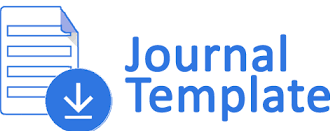Implementasi Kurikulum Merdeka Belajar Melalui Profil Pelajar Pancasila Dalam Mewujudkan Dimensi Gotong Royong
Keywords:
Implementation, Free Learning Curriculum, Pancasila Student Profile, Mutual Cooperation DimensionAbstract
The current curriculum change uses an independent learning curriculum which demands its implementation so that there are several schools that become model schools, one of which is at SMP Negeri 6 Palangka Raya. The implementation of the independent learning curriculum is still in the evaluation stage. The purpose of this study was to analyze how the implementation of the independent learning curriculum at SMP Negeri 6 Palangka Raya focuses on the mutual cooperation dimension of the Pancasila student profile. At SMP Negeri 6 Palangka Raya there are still many students, especially class VII who show they are less active in routine school activities such as volunteer work. There are some students who lack a mutual cooperation attitude, are lazy to take part in community service, do not help each other, do not really like group work, there are just students who do not want to get involved in activities even though it is clear that students have a responsibility to clean up the school environment. This study uses descriptive qualitative methods, with data collection using observation, interviews, and documentation. Based on the results of the research, it was found that the implementation of the independent learning curriculum at SMP Negeri 6 Palangka Raya, especially in class VII, with several implementations of the independent learning curriculum starting to be implemented at SMP Negeri 6 Palangka Raya in July 2023, the new school year 2022/2023. Where the independent learning curriculum is not only in the form of a learning process but there are school programs that support the implementation of the independent learning curriculum. In the independent learning curriculum there are several factors, both supporting factors and inhibiting factors. Supporting factors are the existence of supporting hygiene facilities and infrastructure in schools so that students and teachers can work together in keeping the environment clean, internal factors (within themselves), namely students who understand the importance of the environment and know how to keep the environment clean, there are efforts efforts made by the school such as socializing to students to protect the environment and preserving nature, that the environment is important for humans and the existence of strict school rules, requires students to maintain and create a clean and healthy environment. While the inhibiting factors are the lack of skills and support from teachers in understanding this independent learning curriculum, there are no adequate facilities and infrastructure, schools are still having difficulties in fulfilling infrastructure that can support the implementation of the independent curriculum and have been given an understanding of the importance of maintaining school cleanliness but still there are some students who behave lazily so that it affects their friends around and in the end they also don't maintain cleanliness. In this inhibiting factor the school seeks to minimize by perfecting the implementation of this independent curriculum
Downloads
References
Anton Leonard, Deni Gunawan, Edi Rahmat Widodo & Esti Purnawinarni. (2021). Tunas pancasila. Jakarta: Direktorat Sekolah Dasar Direktorat Jenderal PAUD, Dikdas dan Dikmen Kementerian Pendidikan, Kebudayaan, Riset dan Teknologi.
Inaya. (2022). Implementasi Supervisi Klinis dalam Penerapan Kurikulum Merdeka di Sekolah Dasar. Jurnal Basicedu, 3.
Irfan. (2016). Croudfunding Sebagai Pemaknaan Energi Gotong Royong. Jurnal Ilmu Kependidikan, 30.
Juliati Boang Manalu, Pernando Sitohang & Netty Heriwati Henrika. (2022). Pengembangan Perangkat Pembelajaran Kurikulum Merdeka. Prosiding Pendidikan Dasar, 80–86.
Kemendikbudristek. (2022). Dimensi, Elemen dan Subelemen Profil Pelajar Pancasila Pada Kurikulum Merdeka. Jakarta: Badan Standar, Kurikulum, dan Asesmen Pendidikan Kementerian Pendidikan, Kebudayaan, Riset, dan Teknologi.
Kemendikbudristek. (2022). Kebijakan Pemerintah Terkait Kurikulum Merdeka. Diambil kembali https://pusatinformasi.guru.kemdikbud.go.id/hc/en-us/articles/6824815789465-Kebijakan-Pemerintah-Terkait-Kurikulum-Merdeka
Kemendikbudristek. (2022). Latar Belakang Kurikulum Merdeka. Merdeka Belajar. Diambil kembali dari https://pusatinformasi.guru.kemdikbud.go.id/hc/en-us/articles/6824331505561-Latar-Belakang-Kurikulum-Merdeka
Kewarganegaraan. (2022). Konsep dan penguatan pendidikan karakter. Mentri Pendidikan dan Kebudayaan Republik Indonesia.
Kurniawan. (2017). Pendidikan karakter di sekolah: Revitalisasi peran sekolah dalam menyiapkan generasi bangsa berkarakter. Yogyakarta: Samudra Biru.
Primanita Sholihah Rosmana, Sofyan Iskandar, Hilma Fauziah, Nadiyah Azzifah, & Weby Khamelia. (2022). Kebebasan dalam Kurikulum Prototype. As-Sabiqun, 115–131.
Rudyanto, Yudha & Saputra. (2015). Pembelajaran Kooperatif Untuk Meningkatkan Keterampilan Anak. Jakarta: Departemen Pendidikan Nasional.
Shalahudin Ismail, Suhana Suhana & Qiqi Yuliati Zakiah. (2021). Analisis Kebijakan Penguatan Pendidikan Karakater Dalam Mewujudkan Pelajar Pancasila. Jurnal Manajemen Pendidikan Dan Ilmu Sosial, 76–84.














